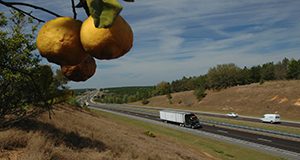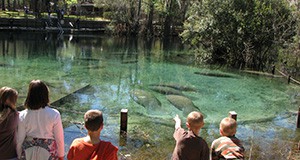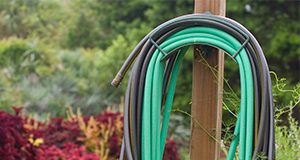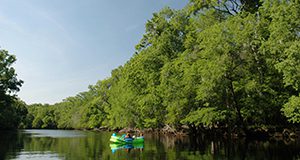Enterprise budgets are effective planning tools for growers in search of help with forecasting, resource coordination, and better production decisions. In essence, enterprise budgets can help producers determine what to produce, how many acres to produce, the cost of production, and the necessary price to be profitable. This 5-page fact sheet written by Tara Wade, Barbara Hyman, Eugene McAvoy, and John VanSickle and published by the UF/IFAS Food and Resource Economics Department describes the process used to create the 2017/18 enterprise budget for tomatoes in southwest Florida and includes resources for producers interested in creating enterprise budgets for their own operations.
https://edis.ifas.ufl.edu/fe1087
Tag: Tara Wade
Constructing a Southwest Florida Bell Peppers Enterprise Budget
Enterprise budgets can assist with forecasting as well as help managers coordinate resources, make production decisions, examine expenditures, and anticipate outcomes from changes in production practices. They can help producers determine what to produce, how many acres to produce, the cost of production, and the necessary price to be profitable. This 6-page fact sheet written by Tara Wade, Barbara Hyman, and Eugene McAvoy and published by the UF/IFAS Food and Resource Economics Department describes the process used to create the 2018-19 enterprise budget for bell peppers in southwest Florida.
https://edis.ifas.ufl.edu/fe1088
The Electronic Logging Device Mandate and Costs for Refrigerated Citrus
Speedy truck transportation is required to get products like fresh produce from the farm to the grocery store before it spoils. The Electronic Logging Device (ELD) Mandate from the Federal Motor Carrier Safety Administration could significantly affect trucking costs for agricultural producers. This 6-page publication written by Tara Wade, Shellye Suttles, and Derek Farnsworth and published by the UF/IFAS Food and Resource Economics Departmentuses truck shipment data to analyze transportation costs and identifies potential future effects of the ELD Mandate.
https://edis.ifas.ufl.edu/fe1086
Economic Value of Florida Water Resources: Contributions of Tourism and Recreation to the Economy
Recreation is only one of the benefits people receive from water resources. Water is essential for fisheries and aquaculture, for drinking and bathing, for sanitation, and for spiritual and symbolic purposes, among myriad other uses described in the Economic Value of Florida Water Resources series. This 6-page fact sheet written by Tatiana Borisova, Kurt Oehlbeck, Xiang Bi, Tara Wade, Alan Hodges, Kelly Grogan, and Fe Hei and published by the UF/IFAS is the second part of the series. It discusses the contribution of water-based tourism to the economy in various Florida regions, summarizing a number of economic studies and focusing on freshwater-based recreation, such as canoeing, freshwater angling, wildlife watching, lake- or river-shore hiking, spring diving, and more. Readers can pick and choose the studies most relevant to their geographic area or their area of interest.
https://edis.ifas.ufl.edu/fe1065
Valuing Florida Water Resources: Households’ Willingness to Pay for Water
This 8-page fact sheet written by Tatiana Borisova, Fei He, Xiang Bi, Kelly Grogan, Tara Wade, and Syed Shah and published by the UF/IFAS Food and Resource Economics Department reviews various methods of examining the value of water availability for household needs. It may be helpful to water resource managers planning investments in water infrastructure to prepare for droughts as well as for analyzing spending on protecting source water availability, for example, by protection of aquifers or increasing the recharge of aquifers, the primary water source in Florida.
http://edis.ifas.ufl.edu/fe1068
Economic Value of Florida Water Resources: Value of Freshwater-Based Recreational Experiences
This 8-page fact sheet written by Tatiana Borisova, Tara Wade, Xiang Bi, Kurt Oehlbeck, and Kelly Grogan and published by the UF/IFAS Food and Resource Economics Department is part 3 of the series “Economic Value of Florida Water Resources.” It uses Florida-based economic studies to provide natural resource professionals and interested citizens with information regarding the value of water-based tourism and recreation in Florida.
http://edis.ifas.ufl.edu/fe1067
Valuing Florida’s Water Resources: Ecosystem Services Approach
This 6-page fact sheet written by Tatiana Borisova, Tara Wade, Xiang Bi, Kurt Oehlbeck, and Kelly Grogan and published by the UF/IFAS Food and Resource Economics Department defines the term “ecosystem services” and presents examples of ecosystem services provided by water resources. It explains three values people assign to water resources and presents a brief overview of the methods that economists employ to measure the value of water.
http://edis.ifas.ufl.edu/fe1064
Valuing Florida Water Resources: Prices of Waterfront Properties

This 9-page fact sheet written by Tatiana Borisova, Xiang Bi, Tara Wade, and Kurt Oehlbeck and published by the UF/IFAS Food and Resource Economics Department explores the relationship between water quality and sale prices of waterfront properties, that is, the amenity value provided by water resources to waterfront communities. Being near to water to water generally increases the value of a residential property. However, poor water quality may decrease waterfront property prices. In other words, investments in restoring water quality can translate into increases in property value and tax collection.
http://edis.ifas.ufl.edu/fe1062/p>
El Mandato del Dispositivo de Registro Electrónico, reglas de las horas de servicio e Implicaciones para los Transportistas de Productos del Sudoeste de Florida
El Mandato del Dispositivo de Registro Electrónico (ELD por sus siglas en ingles), se convirtió en mandato para vehículos motorizados comerciales (CMV) el 18 de diciembre del 2017. El 18 de junio del 2018, después de 90 días de extensión, el mandato también se aplicó a transportistas de productos. El propósito principal detrás del ELD fue asegurar el cumplimiento con los requerimientos de Horas de Servicio (HOS) por autotransporte y sus conductores. Este artículo se enfoca en el movimiento interestatal de propiedades (productos), and sus objetivos son: 1) revisar las reglas HOS; 2) clarificar las excepciones agrícolas a las reglas HOS; y 3) ofrecer una discusión preliminar a cómo los ELD podrían afectar a los productores del sur de Florida. Fritz Roka, Tara Wade, Luis Peña-Lévano, y Craig Sprouse. UF/IFAS Food and Resource Economics Department.
http://edis.ifas.ufl.edu/fe1058
Economic Value of Florida Water Resources: Valuing the Quality of Water for Household Needs
Florida water-resource professionals deciding whether to implement a costly water protection program or to invest in better tap water treatment technology may wonder: Are such investments justified? What are the benefits of the program or investment decision? Just how highly do Floridians value their water? This 5-page fact sheet written by Tatiana Borisova, Syed Irfan Ali Shah, Tara Wade, Xiang Bi, and Kelly Grogan and published by the UF/IFAS Food and Resource Economics Department reviews studies that help assess the value Floridians assign to maintaining or improving the quality of the water supply.
http://edis.ifas.ufl.edu/fe1059
Valuing Florida Water Resources: Water Use in Irrigated Agriculture
Water resources provide us with a variety of goods and services (altogether often referred to as ecosystem services or environmental services.) Part of a series entitled Economic Value of Florida Water Resources, this 5-page fact sheet written by Tatiana Borisova, Syed Irfan Ali Shah, Tara Wade, Kelly Grogan, and Xiang Bi and published by the UF/IFAS Food and Resource Economics Department assesses the economic value of the ecosystem services provided by irrigation water and shows the importance to agriculture of water resource protection and restoration.
http:edis.ifas.ufl.edu/fe1057
The Electronic Logging Devices Mandate and Hours Of Service for Produce Haulers
Electronic logging devices, or ELDs, became mandatory for commercial motor carriers December 18, 2017. The compliance timeline for the produce industry was delayed with two 90-day waivers. On June 18, 2018, however, ELDs became mandatory for produce haulers as well. The primary purpose behind requiring ELDs was to ensure greater compliance with existing hours of service requirements by motor carriers and their drivers. This 5-page fact sheet written by Fritz Roka, Tara Wade, and Craig Sprouse and published by the UF/IFAS Food and Resource Economics Department reviews HOS rules, clarifies agricultural exceptions to the HOS rules, and offers a preliminary discussion as to how ELDs could affect south Florida produce growers.
edis.ifas.ufl.edu/fe1052
Los recursos hidricos de Florida
Tatiana Borisova y Tara Wade, Departamento de Economia de Alimentos y Recursos, UF/IFAS. This is the Spanish translation of “Florida’s Water Resources,” available in English here.
http://edis.ifas.ufl.edu/fe1044








